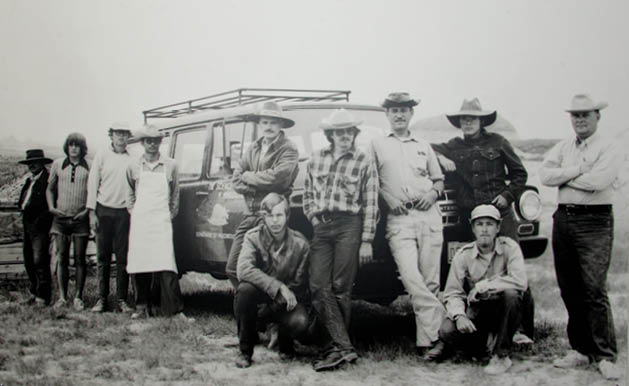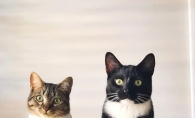Jackie Hoff defies conventional assumptions. The California-born former pageant girl/dynamite-blasting oilfield worker scurries around the Science Museum of Minnesota (SMM) in Minnesota weather-taunting shorts, a “Science is Magic” sweatshirt and palpable enthusiasm. It wouldn’t be surprising to find her visiting one of the museum’s exhibits and satisfying her insatiable curiosity—a kid in a candy shop.
Hoff’s professional habitat is a short elevator ride down into the museum’s 14,000-square-foot collections space. She’s been with SMM for 20 years, and for the last decade, Hoff has served as the director of collections services, which is home to about 1.75 million items. “I work with all of our loaned material in our accessioned collections or our lenders’ collections, monitor and track the movement of any of our collections, ensure we have the proper documentation for all we own or ensure we have the correct permits for any field work,” she explains.
“My team also is responsible for ensuring that any of our objects and/or the specimens are stable and safe,” Hoff says. “We also work with researchers and the public to provide access to the collections.” Tours of collections services are offered for fundraisers, and four times a year for the public (included in the museum entry fee). “I just want to pass on the awe and excitement to the next generation,” Hoff says. The chance to pull back the curtain on the museum’s storage area should not be missed. The opportunity to view artifacts without plexiglass barriers or crowds is a unique experience, to say the least.
Hidden Treasures
A first stop on a recent tour, behind secured doors and monitored by cameras, finds visitors in the records vault. Every item is documented, ensuring its authenticity and legality of ownership and including information about the piece. Characteristics, including size and other descriptors (even the minutiae), are recorded. Data entry is vital. “Even if it’s two sentences, it has to be accurate,” Hoff says. Information is king. Some of that information is gleaned from curators and academics, Hoff notes. When it was necessary to pack and move some Hmong skirts, the museum tapped into the local community, asking Hmong grandmothers about the cultural significance of the skirts and packing methods. “We are fortunate that we have a diverse community,” Hoff says, explaining the breadth of resources often utilized to delve into an artifact’s back-story.
Once in the humidity- and temperature-controlled collections area, visitors are reminded to refrain from touching the items for obvious and not-so-obvious reasons. Hoff explains that poisons, once used to preserve items, can remain toxic and be absorbed through skin. Even an item’s original use can prove risky. Museum staff and volunteers use caution, for example, when touching curare pots, which South American indigenous peoples used to contain a poisonous mixture to dip their arrows into.
Row after row of ordinary-looking floor-to-ceiling storage cabinets stand holding hidden treasures. Visitors soon learn that the cabinets are filled with pieces from the worlds of archeology, biology, ethnology and paleontology—all waiting until it’s time to move upstairs and be part of an exhibit or for the curious minds of researchers to peel away the remaining mystery to find the full story.
The entomologic specimens (better known as bugs) are stored in their own area, where Hoff rolls out a tray like she’s presenting a velvet-lined tray of Tiffany baubles. And they even look like gems. The specimens’ size and colors, saturated with deep tones, are stunning. Never before has a bug looked so red-carpet-ready. As for the bug traps peeking from behind storage spots, Hoff explains, “Live animals in a collections area isn’t something you want unless you’re in a zoo.” Point taken.
In the main area, Hoff pauses at the “to do” aisle, where a 60 million-year-old crocodile cast, a woolly mammoth tusk from southern Minnesota, boxes of moths and an amethyst the size of a basketball await their destination, either in storage or on display. Some donated items fail to fit into the museum’s collection plan. “It’s a living, breathing document, but we don’t want to change it too much,” Hoff says. “We’re not the museum of everything.”
Calls to the museum from collectors and private citizens go through Hoff, and she’s heard it all. One earnest caller claimed to have procured a hair sample from America’s favorite bipedal mystery man, Bigfoot. “Do you have a photo of it?” Hoff asked the caller. “I get a lot of ‘I got stuff in the attic,’” she says of other calls. Hoff will, from time to time, pay a visit to examine items that might be suitable for SMM. Hoff takes any and all calls seriously. “It’s a chance for education,” she says. “People don’t always understand museums.”
To that end, Hoff attempts to find items a home, either at or away from SMM. “We keep all of our accessioned material unless the museum’s strategic plan is changed as to what we collect,” Hoff says. “If that happens, then we try to ensure that whatever leaves our museum finds a home in another museum (or educational entity). Most museums are very focused, and objects just do not come and go.”
Once SMM secures an item, it works to ensure its longevity for generations to come. “We have a wonderful conservator, Rebecca Newberry, who works to stabilize our collections,” Hoff says. The conservation program cares for the entire range of collections, which vary greatly, from ethnographic textiles to dinosaurs, from bird skins and eggs to stone tools and metals. Collections care at the Science Museum focuses on preventing damage to the collections.
Curiosity Continues
Among those nearly 2 million items housed in the collection room, Hoff doesn’t play favorites. “They all are special to me,” she says. “Each object tells a unique story and is as important as the next object or specimen.” Hoff later adds, “Everything in here is amazing, and the fact that they are in a collection makes me smile even more.” Visitors would be hard-pressed to pick a favorite, too. Hoff, who has an anthropology degree from the University of Minnesota, is intrigued by the marriage of history and science “and all that it can tell us and show us, if we only look for the signs and learn to ask the correct question,” she says.
Hoff supplies ample answers throughout the tour, including the origins of Polynesian and Central and South American spears, bows, arrows and carved paddles, made of rich, dark wood, that stand quietly against a wall. Songbirds’ royal hues and their delicate bones conspire to create an exquisite hair adornment from the Peruvian Aguaruna tribe. Tone-laden beetle wings and toucan feathers create 10-inch breathtaking earrings. Imagine a modern-day milliner crafting hat from a monkey’s pelt and the underbelly of a bird. Another shelf hosts unlikely table partners—a 5,000-year-old mummified falcon from Egypt, Roman oil lamps and glass from Pompeii. A round boat created from a seamless section of bull hide, Ojibwe quill art and birch bark biting, created to stave off boredom during winter, share space.
More than a decade’s worth of guiding tours and spending hours amid the collection hasn’t dulled Hoff’s inquisitiveness. “Of course I’m curious,” she says. “The older I get, the more questions I have.” She often gets the chance to exercise her curious nature during trips on behalf of SMM, previewing items and collections from around the world, including the Bay of Fundy, Belize, Israel, Mexico and Spain—but a historical artifact collector she is not. “I am ethically bound to not collect what we hold in our collections, so I went to the other extreme,” Hoff says. “I have one heck of a collection of cheap fridge magnets from all over the globe.”

(This North Dakota expedition lasted from 1970-1996 and in the end, brought in more than 8,000 specimens to the museum.)









